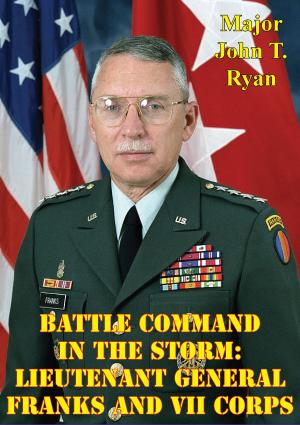Base Defense At The Special Forces Forward Operational Bases
Nonfiction, History, Middle East, Persian Gulf War, Military| Author: | Major Curtis W. Hubbard | ISBN: | 9781786252272 |
| Publisher: | Tannenberg Publishing | Publication: | November 6, 2015 |
| Imprint: | Tannenberg Publishing | Language: | English |
| Author: | Major Curtis W. Hubbard |
| ISBN: | 9781786252272 |
| Publisher: | Tannenberg Publishing |
| Publication: | November 6, 2015 |
| Imprint: | Tannenberg Publishing |
| Language: | English |
Special Forces forward operational bases (FOB) are essential for mission and contingency planning as well as for the preparation, infiltration and exfiltration of Operational Detachment Alphas (ODA). Therefore, the defense of this command and control headquarters is critical for preserving combat power and synchronizing military actions in a theater of operations. Because the enemy has the capability of projecting forces with the objective of disrupting US military operations, FOBs have become likely targets.
According to SF doctrine, FOBs should be located in secure areas with MP or host-nation personnel providing the bulk of the security force. Although this situation is preferable, it is by no means assured. FOBs should be able to provide their own security in the event other forces are not available or when rapid deployment restricts the flow of conventional forces into a theater of operations. After-action review results from the Joint Readiness Training Center demonstrate that many SF battalions are not prepared to execute base defense tasks without the assistance of other forces. Many SF commanders do not consider base defense a mission essential task and the result is a lack of training by many of their personnel.
This study analyzes joint and SF doctrine, observations from the field, and the effects of the contemporary operating environment to identify weaknesses in the readiness of SF battalions.
Special Forces forward operational bases (FOB) are essential for mission and contingency planning as well as for the preparation, infiltration and exfiltration of Operational Detachment Alphas (ODA). Therefore, the defense of this command and control headquarters is critical for preserving combat power and synchronizing military actions in a theater of operations. Because the enemy has the capability of projecting forces with the objective of disrupting US military operations, FOBs have become likely targets.
According to SF doctrine, FOBs should be located in secure areas with MP or host-nation personnel providing the bulk of the security force. Although this situation is preferable, it is by no means assured. FOBs should be able to provide their own security in the event other forces are not available or when rapid deployment restricts the flow of conventional forces into a theater of operations. After-action review results from the Joint Readiness Training Center demonstrate that many SF battalions are not prepared to execute base defense tasks without the assistance of other forces. Many SF commanders do not consider base defense a mission essential task and the result is a lack of training by many of their personnel.
This study analyzes joint and SF doctrine, observations from the field, and the effects of the contemporary operating environment to identify weaknesses in the readiness of SF battalions.

![Cover of the book Leaping The Atlantic Wall - Army Air Forces Campaigns In Western Europe, 1942-1945 [Illustrated Edition] by Major Curtis W. Hubbard](https://www.kuoky.com/images/2015/november/300x300/9781786252456-4Yqi_300x.jpg)
![Cover of the book U.S. Marines in Iraq, 2004 - 2005: Into the Fray: U.S. Marines in the Global War on Terror [Illustrated Edition] by Major Curtis W. Hubbard](https://www.kuoky.com/images/2014/august/300x300/9781782895442-RHoP_300x.jpg)











![Cover of the book Conquering The Night — Army Air Forces Night Fighters At War [Illustrated Edition] by Major Curtis W. Hubbard](https://www.kuoky.com/images/2015/november/300x300/9781786252371-lfdB_300x.jpg)
